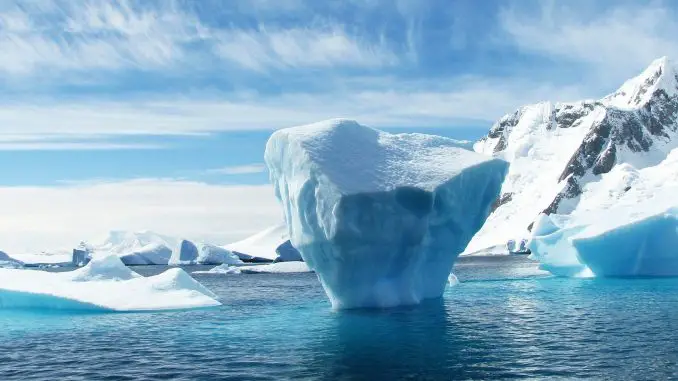
It looks like the Arctic has stopped melting for the year. We cannot be entirely sure, but this past week the curve has leveled out. In that case, the new record listing will land on an ice spread of just over 3.4 million square kilometers, according to the US agency NSDIC’s measurements. The last record was from 2007, at just over 4.1 million square kilometers. Summer ice cream has now halved since the 1970s.
And then we talk about the visible ice. The researchers who measure the depth, and calculate the volume of ice, arrive at even more extreme figures – about 75 percent of the ice has disappeared. This means that the Arctic will find it difficult to recover. The sea will freeze again this winter, but when the melting season starts again next year, the ice is weaker and thinner. This indicates that the Arctic is in a spiral of death.
There are scientists who believe that summer ice cream will disappear in 2015-2016. While most people expect it to take longer, it is still pretty clear that the UN Climate Panel (IPCC) was far too optimistic in its latest report in 2007, when it was believed that summer ice cream would survive to the end of the century.
What are the consequences? How is climate and weather affected when large parts of the Arctic become open sea during the summer?
Such issues are now being intensively discussed. The research corps is in a way a vigilant profession. Melting goes much faster than expected. You simply have not kept up with the turns.
Some basic facts are clear in themselves: when the ice cover disappears, dark ocean attracts more solar energy, warming increases, the open sea emits more water vapor. But otherwise, the somewhat unsatisfactory answer is simply that we don’t really know.
However, we can be pretty sure that a warmer Arctic will affect the huge land ice on Greenland. It is not about any imminent collapse of the glacier. Greenland will be covered for hundreds of more years. But the rate of melting has consequences for how much sea levels rise this century, and thus for people in coastal regions around the world. Today’s estimates vary widely, between about 0.3 and 1.5 meters by the year 2100. For people in, for example, Bangladesh and Vietnam, the higher forecasts are spelled disaster.
We also know that a warmer arctic climate causes thawing of permafrost in northern Siberia, among other things, and that it will emit large quantities of the potent greenhouse gas methane. It is also speculated that frozen layers of methane hydrates in the seabed may thaw – which, in some scenarios, risks causing galloping, unpredictable climate change. However, this is a minority view. Prominent climate scientist David Archer gave a more cautious picture of what to expect last winter. If you try to summarize where the research stands, the result will be something like this: a warmer Arctic leads to greater methane emissions, which presents us with even greater challenges, but the doomsday does not wait around the corner.
However, the melting in the Arctic does not only lead to long-term consequences. Most of it indicates that we will be affected already this winter – the question is just how. When the ice soon begins to settle, the ocean will release a lot of thermal energy, which gets into the atmosphere.
There is a hypothesis that has been strengthened more and more in recent years. It looks (very simplified) like this: The Arctic is warming more than the areas south. The temperature differences between the north and the south are thus reduced. This causes the jet stream – a high-level western wind – to weaken. This wind separates cold air in the north from warmer air in Europe, northern Asia, and North America. As jet stream declines, Arctic cold sometimes pulls down more easily over, for example, northern Europe, while warmer air sometimes moves north. The weather simply becomes more unstable.
At the same time, the weakened jet stream leads to low and high pressure tending to be permanently longer. Extreme weather then not only sweeps past but stays for weeks at a time. This could be an explanation for the weather phenomenon that has followed in the wake of the ice melt in the Arctic in recent years, such as the two extremely cold winters in Sweden 2009-2011, this year’s abnormally rainy summer in the UK and the prolonged high pressure over Greenland.
So far we don’t know if these theories are true. However, we can be pretty sure that the coming winter will be interesting to follow. The record meltdown in the Arctic will have consequences for the weather – the uncertainty only applies to which ones. Climate change is not a future. They are here. Now.
Leave a Reply